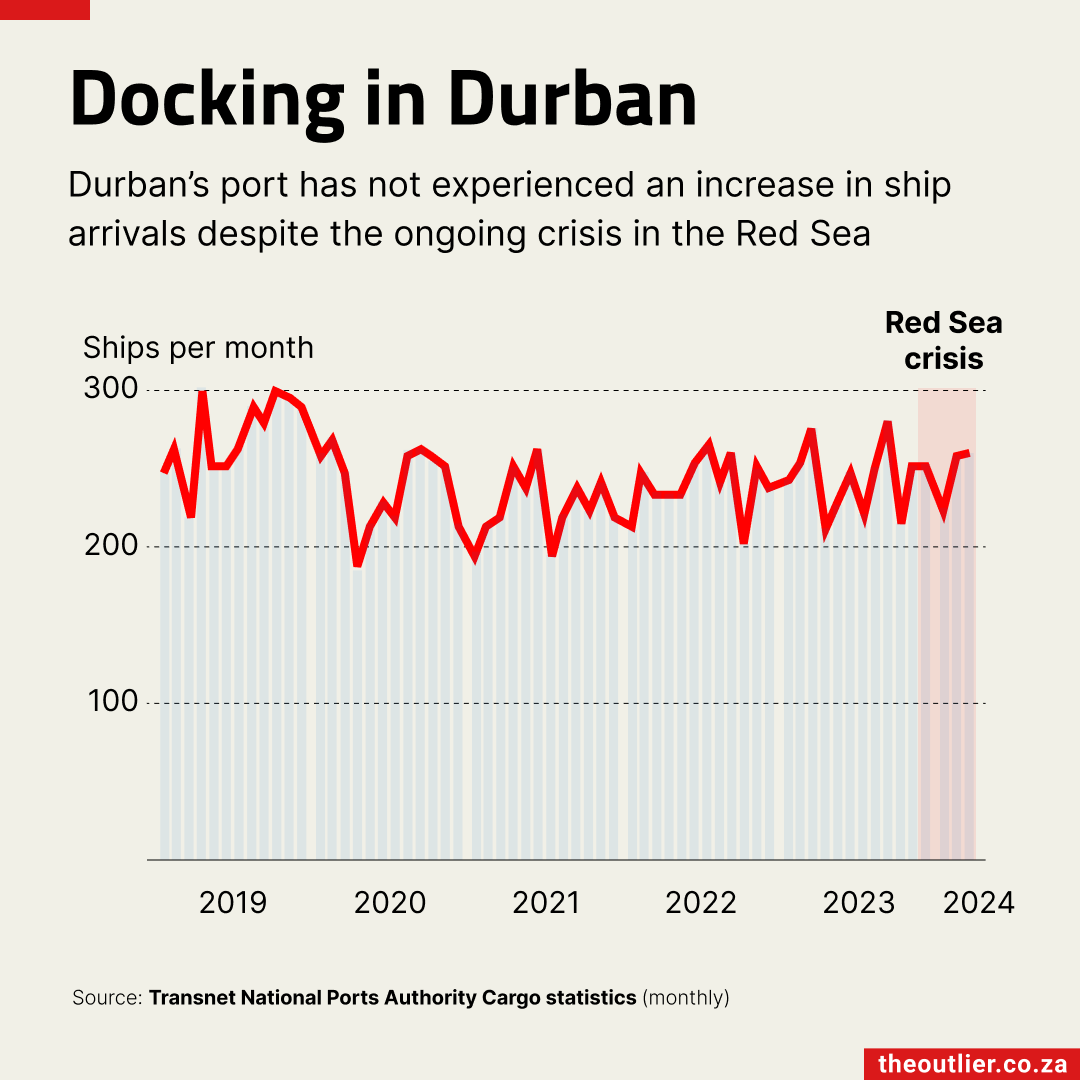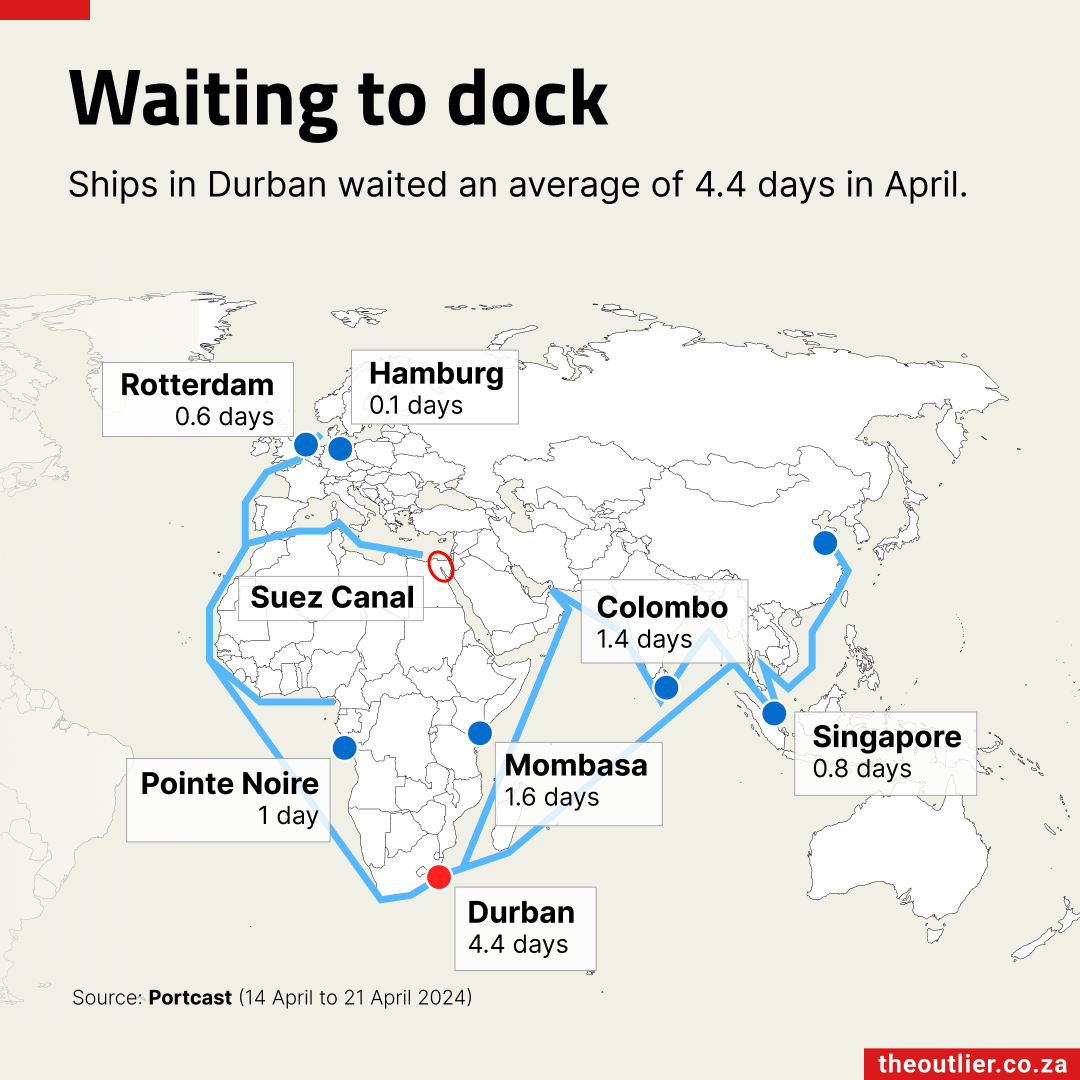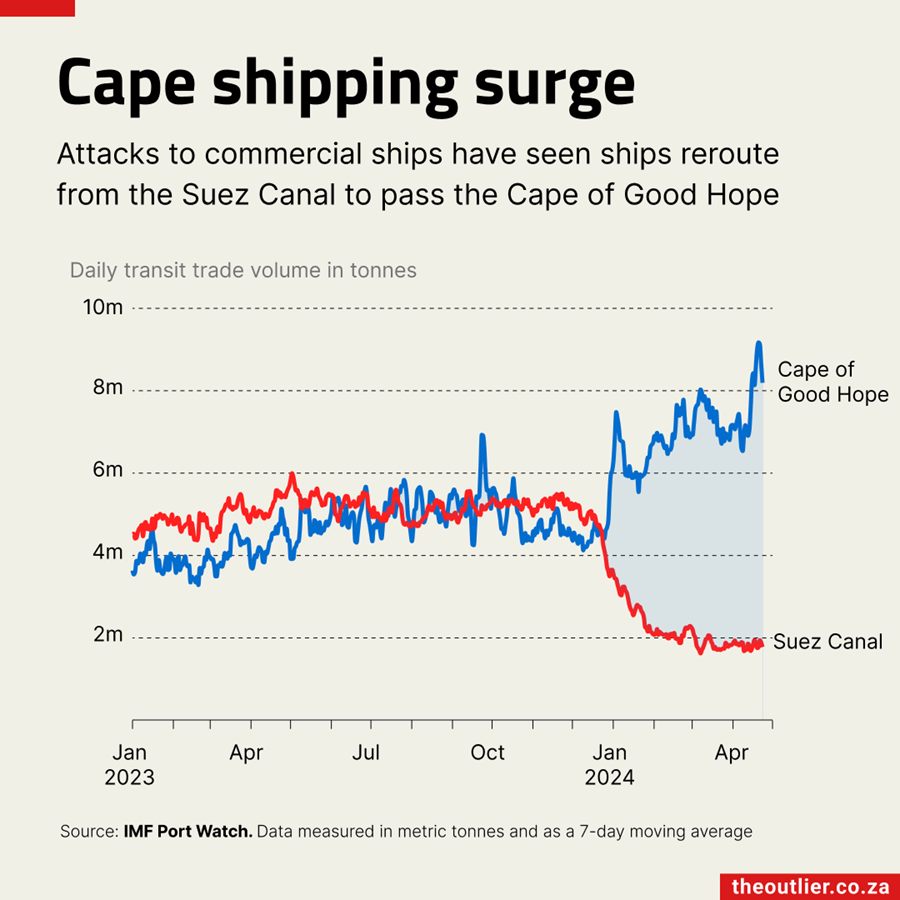South Africa’s ports miss the boat as ships reroute via the Cape
Attacks to commercial ships in the Red Sea have led to companies rerouting their vessels around the Cape of Good Hope to avoid the Suez Canal.
Photo: canva.com
South Africa’s ports are missing out on revenue generated by the increase in cargo ships being rerouted around the southern tip of Africa.
Since Iran-backed Houthi rebels based in Yemen started targeting commercial ships on the Red Sea in solidarity with Palestinians in November 2023, shipping companies have been rerouting their ships to avoid using the Suez Canal.
About a 10th of the world’s maritime trade volume usually passes through the Suez Canal. But attacks on more than 50 ships between January and March this year have resulted in the number of ships rounding the Cape of Good Hope almost doubling to 7,078 from 3,815 last year, according to PortWatch, a collaborative project between the IMF and Oxford University.

The increase in shipping traffic along Africa’s east coast does not appear to have had much impact on Durban, South Africa’s busiest container port.
Transnet statistics show that in the first 3 months of this year, 744 ships arrived at Durban, which is 29 fewer than the 773 ships that arrived at the port in the first 3 months of last year.

The time ships have to wait to dock at Durban port could be a reason for this. In mid-April, the average wait time was 4 days, according to Portcast’s port congestion dashboard. The average wait time at Mombasa in Kenya or Pointe Noire in the Republic of the Congo is less than 2 days.
In China’s Shanghai port, where 336 ships were waiting to dock between 15 and 21 April, the wait time was 1.1 days.
Unlike Durban, Mombasa and Pointe Noire have seen a marked increase in the number of ships docking. According to Portcast, Point Noire’s vessel count rose from a 3-month average of 15 ships to 20 ships in one week in December 2023. Mombasa’s rose from an average of 15 vessels a week to 23 a week in December.

The Port of Durban’s congestion woes are well known, Transnet chair Andile Sangqu said at a media briefing in April. He said Durban Container Terminal, which manages about 65% of the port’s container cargo, had ‘remained the same’ since 1963.
Durban port’s wait time has improved since March, when the wait time was 7 days.






